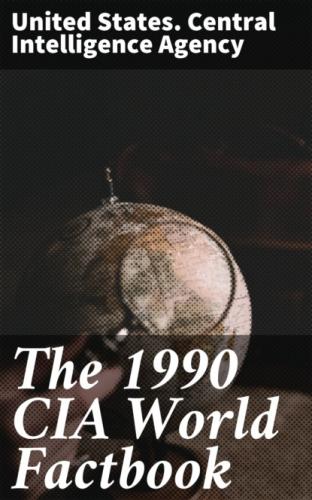Legislative branch: unicameral National Assembly (Assemblee Nationale) was dissolved on 25 November 1980
Judicial branch: Appeals Court
Leaders:
Chief of State and Head of Government—Chairman of the
Popular Front Captain Blaise COMPAORE (since 15 October 1987)
Political parties and leaders: all political parties banned following
November 1980 coup
Suffrage: none
Elections: the National Assembly was dissolved 25 November 1980 and no elections are scheduled
Communists: small Communist party front group; some sympathizers
Other political or pressure groups: committees for the defense of the revolution, watchdog/political action groups throughout the country in both organizations and communities
Member of: ACP, AfDB, CCC, CEAO, EAMA, ECA, EIB (associate), Entente, FAO,
GATT, G-77, IBRD, ICAO, IDA, IDB—Islamic Development Bank, IFAD, IFC, ILO, IMF,
INTELSAT, INTERPOL, IPU, IRC, ITU, NAM, Niger River Commission, OAU, OCAM, OIC,
UN, UNESCO, UPU, WCL, WFTU, WHO, WIPO, WMO, WTO
Diplomatic representation: Ambassador Paul Desire KABORE; Chancery at 2340 Massachusetts Avenue NW, Washington DC 20008; telephone (202) 332–5577 or 6895; US—Ambassador David H. SHINN; Embassy at Avenue Raoul Follerau, Ouagadougou (mailing address is B. P. 35, Ouagadougou); telephone p226o 30–67-23 through 25
Flag: two equal horizontal bands of red (top) and green with a yellow five-pointed star in the center; uses the popular pan-African colors of Ethiopia
- Economy Overview: One of the poorest countries in the world, Burkina has a high population density, few natural resources, and relatively infertile soil. Economic development is hindered by a poor communications network within a landlocked country. Agriculture provides about 40% of GDP and is entirely of a subsistence nature. Industry, dominated by unprofitable government-controlled corporations, accounted for 13% of GDP in 1985.
GDP: $1.43 billion, per capita $170; real growth rate 7.7% (1988)
Inflation rate (consumer prices): 4.3% (1988)
Unemployment rate: NA%
Budget: revenues $422 million; expenditures $516 million, including capital expenditures of $25 million (1987)
Exports: $249 million (f.o.b., 1988); commodities—oilseeds, cotton, live animals, gold; partners—EC 42% (France 30%, other 12%), Taiwan 17%, Ivory Coast 15% (1985)
Imports: $591 million (f.o.b., 1988); commodities—grain, dairy products, petroleum, machinery; partners—EC 37% (France 23%, other 14%), Africa 31%, US 15% (1985)
External debt: $969 million (December 1988)
Industrial production: growth rate 7.1% (1985)
Electricity: 121,000 kW capacity; 320 million kWh produced, 37 kWh per capita (1989)
Industries: agricultural processing plants; brewery, cement, and brick plants; a few other small consumer goods enterprises
Agriculture: cash crops—peanuts, shea nuts, sesame, cotton; food crops—sorghum, millet, corn, rice; livestock; not self-sufficient in food grains
Aid: US commitments, including Ex-Im (FY70–88), $271 million; Western (non-US) countries, ODA and OOF bilateral commitments (1970–87), $2.5 billion; Communist countries (1970–88), $94 million
Currency: Communaute Financiere Africaine franc (plural—francs); 1 CFA franc (CFAF) = 100 centimes
Exchange rates: CFA francs (CFAF) per US$1—284.55 (January 1990), 319.01 (1989), 297.85 (1988), 300.54 (1987), 346.30 (1986), 449.26 (1985)
Fiscal year: calendar year
- Communications Railroads: 620 km total; 520 km Ouagadougou to Ivory Coast border and 100 km Ouagadougou to Kaya; all 1.00-meter gauge and single track
Highways: 16,500 km total; 1,300 km paved, 7,400 km improved, 7,800 km unimproved (1985)
Civil air: 2 major transport aircraft
Airports: 50 total, 43 usable; 2 with permanent-surface runways; none with runways over 3,659 m; 2 with runways 2,440–3,659 m; 7 with runways 1,220–2,439 m
Telecommunications: all services only fair; radio relay, wire, and radio communication stations in use; 13,900 telephones; stations—2 AM, 2 FM, 2 TV; 1 Atlantic Ocean INTELSAT earth station
- Defense Forces
Branches: Army, Air Force
Military manpower: males 15–49, 1,775,143; 904,552 fit for military service; no conscription
Defense expenditures: 3.1% of GDP (1987)
——————————————————————————
Country: Burma
- Geography
Total area: 678,500 km2; land area: 657,740 km2
Comparative area: slightly smaller than Texas
Land boundaries: 5,876 km total; Bangladesh 193 km, China 2,185 km,
India 1,463 km, Laos 235 km, Thailand 1,800 km
Coastline: 1,930 km
Maritime claims:
Contiguous zone: 24 nm;
Continental shelf: edge of continental margin or 200 nm;
Extended economic zone: 200 nm;
Territorial sea: 12 nm
Climate: tropical monsoon; cloudy, rainy, hot, humid summers (southwest monsoon, June to September); less cloudy, scant rainfall, mild temperatures, lower humidity during winter (northeast monsoon, December to April)
Terrain: central lowlands ringed by steep, rugged highlands
Natural resources: crude oil, timber, tin, antimony, zinc, copper, tungsten, lead, coal, some marble, limestone, precious stones, natural gas
Land use: 15% arable land; 1% permanent crops; 1% meadows and pastures; 49% forest and woodland; 34% other; includes 2% irrigated
Environment: subject to destructive earthquakes and cyclones; flooding and landslides common during rainy season (June to September); deforestation
Note: strategic location near major Indian Ocean shipping lanes
- People
Population: 41,277,389 (July 1990), growth rate 2.0% (1990)
Birth rate: 33 births/1,000 population (1990)
Death rate: 13 deaths/1,000 population (1990)
Net migration rate: 0 migrants/1,000 population (1990)
Infant mortality rate: 97 deaths/1,000 live births (1990)
Life expectancy at birth: 53 years male, 56 years female (1990)
Total fertility rate: 4.2 children born/woman (1990)
Nationality: noun—Burmese; adjective—Burmese
Ethnic divisions: 68% Burman, 9% Shan, 7% Karen, 4% Rakhine, 3% Chinese, 2% Mon, 2% Indian, 5% other
Religion: 85% Buddhist, 15% animist beliefs, Muslim, Christian, or other
Language: Burmese; minority ethnic groups have their own languages
Literacy: 78%
Labor force: 16,036,000; 65.2% agriculture, 14.3% industry, 10.1% trade, 6.3% government, 4.1% other (FY89 est.)
Organized labor: Workers' Asiayone (association), 1,800,000 members, and
